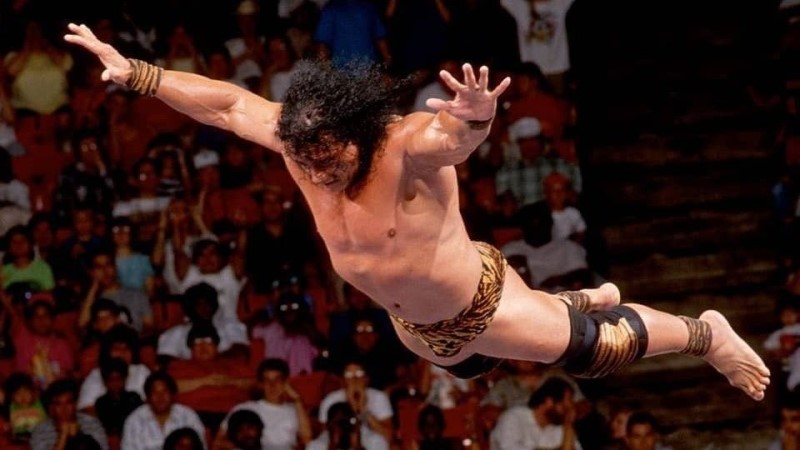
Technical Wrestling vs. High-Flying Styles – How In-Ring Action Has Evolved – In the olden days of pro wrestling, men rarely left their feet off the mat. There were no aerial displays like suicide dives and moonsaults. Instead, wrestlers dug themselves into the ground and grappled, sometimes using legit amateur wrestling moves.
Today, WWE and other shows look nothing like pro wrestling did at its inception. Gravity-defying moves by wrestlers known as high-flyers have changed the game and ultimately made it more entertaining.
In this article, we’ll explore the evolution of the most popular pro wrestling styles, focusing on the contrast between the pioneers of technical wrestling and acrobatic high-flyers. Which is better for the sport? Can they co-exist in modern wrestling? Are there any other new styles that can let us glimpse into the future of wrestling entertainment? Let’s find out.
A Brief History of Technical Wrestling
The history of technical wrestling coincides with the history of professional wrestling itself. The origins of this entertainment type can be traced back to the post-Civil War period when wrestling was commonly performed at traveling carnivals in the Midwest. The individuals were usually experienced amateur wrestlers, and even though the matches were staged, no distinct pro wrestling styles were developed yet, so they looked more like competitive wrestling matches than anything else.
Some of the top pro wrestlers at the turn of the century were Martin “Farmer” Burns, Evan “Strangler” Lewis, and Frank Gotch. They competed at a time when pro wrestling was still considered legitimate, claiming both domestic and international championships.
Over the years, pro wrestling underwent a complete transformation with the in-ring product becoming more flashy to attract fans. A variety of elaborate holds and signature maneuvers were introduced, further distancing pro wrestling from the traditional sport.
Still, many pro wrestlers with a background in amateur wrestling relied on the technical style, dependent on strong grappling and skill moves. Some of the best technical wrestlers in history include Dory Funk Jr., Kurt Angle, Bob Backlund, Jack Brisco, Rick Rude, Sheldon Benjamin, Charlie Haas, Bret Hart, and Dan Severn, to name just a few.
How High-Flying Styles Transformed Pro Wrestling
High-flying and a variety of other styles were introduced to professional wrestling in the 1920s. This was the time after the retirement of Frank Gotch when pro wrestling started quickly losing popularity. New promoters wanted to reinvent the sport, so innovative and exciting moves were more than welcome.
One of the first pro wrestlers with an unorthodox style was Gus Sonnenberg. He had no background in wrestling, in fact, and was a former football player. So, instead of using a traditional Greco-Roman arsenal of moves like many of his peers, Sonnenberg focused on maneuvers like the flying tackle. Safe to say, this was a hit with the crowds who again started showing up to pro wrestling events.
Then came Hebrew Hercules (also known as Jewish Tarzan), who introduced the dropkick, a move he said he learned from the kangaroos on one of his visits to Australia in the 1930s. Many pro wrestlers at the time would adopt the dropkick into their toolbox, like Antonino Rocca, for example, who was also famous for maneuvers, such as the hurricanrana and the flying body press, both of which are fairly common today. That’s why a lot of fans rightfully identify Rocca as the original high-flyer.
But this was only the beginning of what the high-flying style would evolve into in decades to come. Harley Race gave us the diving headbutt, which would later be adopted by stars like Dynamite Kid, Chris Benoit, and Daniel Bryan. And, of course, who can forget Jimmy Snuka and his Superfly Smash that he did standing atop the ropes and cages?
Main Differences Between Technical Wrestlers and High-Flyers
The differences between technicians and high-flyers in pro wrestling are pretty obvious. Technical wrestlers are more skill-based: they target limbs and rely on submissions to win their matches. Meanwhile, high-flyers are speedy wrestlers prone to taking more risks and doing acrobatic finishes.
Now, you may think that technical wrestlers and high-flyers stand on opposite sides of the pro wrestling style diagram, but things are a little more complex than that.
Namely, many wrestlers combine the two techniques, using classic moves as a foundation and incorporating high-flying maneuvers for visual appeal and dramatic effect. For instance, a technical high-flyer doesn’t take as many risks as a regular high-flyer, focusing more on targeting the opponent’s limbs and using submissions.
Do High-Flying Styles Make for More Entertaining Wrestling Events?
High-flyers have redefined modern professional wrestling and are one of the main reasons behind its ever-growing popularity. For instance, Lucha Libre, which originated in Mexico, is entirely centered on high-flying moves and is why pro wrestling is so popular among the Latino demographic.
This style is what brought pro wrestling its worldwide appeal. People today not only follow wrestling for its entertainment potential but also love taking bets on the outcomes. Yes, there are even sports betting options on pro wrestling matches today, and if you need help finding them, you can refer to the bet experts at BetZillion and their official website, which features some of the best betting sites for wrestling and other sports.
High-flying slowly became the norm, so wrestlers started pushing the boundaries of what was physically possible to perform in a ring (and atop the ropes). Moonsaults become more impressive, with wrestlers like Ricochet (now known as Prince Puma) adding new elements to it, like 630-degree senton turns.
While pro wrestling will always revolve around the technical fundamentals and the mixture of styles that embrace powerhouses, showmen, and giants, it’s the athleticism and daring of high-flyers that truly make the sport what it is today.
These gravity-defying maneuvers, like somersaults, dives, and flips, create moments of intense anticipation and are a winner with any crowd. The split-second suspension in mid-air, the dramatic execution, and the breathtaking landings are what make the audiences roar in excitement. It’s the mixture of skill, spectacle, and suspense that renders high-flying wrestlers true aerial artists and why this will likely remain the predominant wrestling style for many years to come.
What Is the Future of In-Ring Wrestling?
Predicting the future of in-ring wrestling is not easy since the sport made many sudden shifts over the years. Rebrands are common as promotions constantly try out new stuff with the effort to boost engagement and make it into the untapped markets.
But what we can all agree upon is that all the top wrestling promotions, such as WWE, AEW, Ring of Honor, WCW, and Lucha Libre, tend to embrace more acrobatic styles and evolving storytelling, all while using advancing technology and cultural trends to remain relevant with the younger crowds.
We can even expect augmented and virtual reality to enhance the experiences for fans, both live and at home. Analytics and AI help tailor storylines to audience preferences and ultimately make the content more engaging. In terms of style, we can expect wrestlers to keep pushing physical boundaries with innovative moves, all while emphasizing inclusivity and diversity within the talent pool.
Conclusion
The evolution of in-ring action in pro wrestling reflects the dynamic nature of the sport and perfectly illustrates its demand for entertainment and experimentation. Technical wrestling, with its emphasis on holds, submissions, and mat-based maneuvers, has provided a solid foundation that showcases the wrestlers’ skill and athleticism. Meanwhile, high-flying styles have made wrestling into a true spectacle for the masses, bringing a new level of excitement and captivating audiences with breathtaking aerial tricks and acrobatics.
The fusion of these styles is what gives today’s pro wrestling its identity. One can’t exist without the other since versatility is exactly what makes professional wrestling so entertaining. As the sport continues to evolve, this blend of technical prowess and high-flying innovation promises to keep fans engaged, ensuring wrestling’s bright future.
Stay tuned to WrestlingAttitude, WA.Com On Twitter and Google News for more.
Technical Wrestling vs. High-Flying Styles – How In-Ring Action Has Evolved



